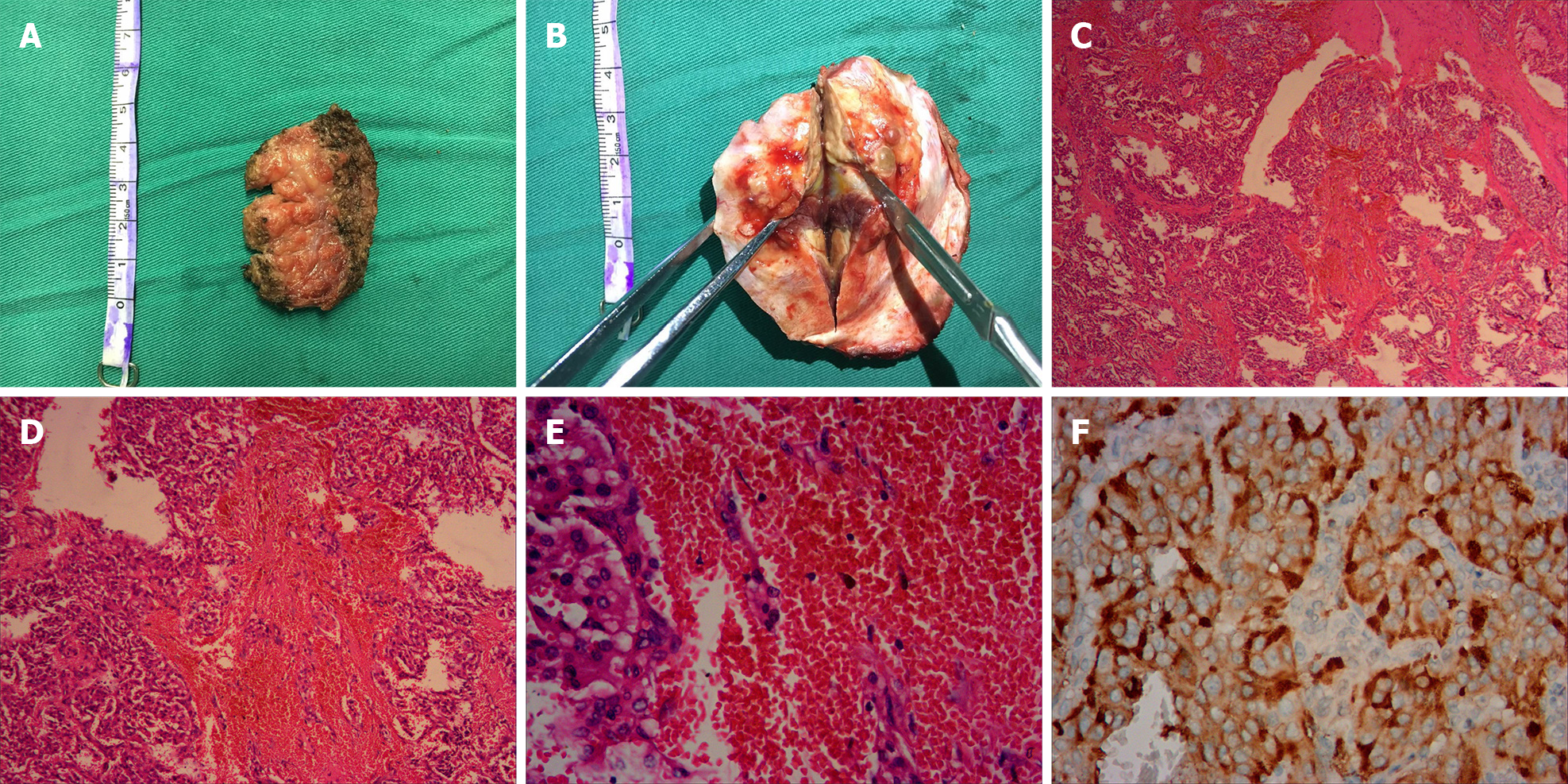Copyright
©The Author(s) 2021.
World J Clin Cases. Apr 26, 2021; 9(12): 2791-2800
Published online Apr 26, 2021. doi: 10.12998/wjcc.v9.i12.2791
Published online Apr 26, 2021. doi: 10.12998/wjcc.v9.i12.2791
Figure 1 Radiographic images of the presenting case.
A: Magnetic resonance imaging (MRI) T1-weighted imaging showed an isointense left temporal lobe mass; B: MRI T2-weighted imaging showed a mixed hypointense and hyperintense left temporal lobe mass; C: Homogeneous enhancement of well-defined lesion was showed on axis MRI after intravenous contrast material; D: Coronal MRI showed the left temporal lobe mass after intravenous contrast material; E: Unenhanced computed tomography (CT) scan indicated the left temporal lobe mass; F: Multiple lytic lesion of the left temporal bone was noted on CT scan.
Figure 2 Histopathological appearances of the left temporal lobe mass.
A: The extracranial part (the musculi temporalis) of the gross surgical specimen; B: The intracranial part (the epidural mass with adhered temporal bone) is showed; C: Neoplastic cells arranged in a nested and trabecular fashion and surrounded by a labyrinth of capillaries are demonstrated (hematoxylin and eosin, × 40); D: Hematoxylin and eosin, × 100; E: Hematoxylin and eosin, × 400; F: Immunohistochemical analysis revealed strong diffuse immunoreactivity for CgA.
Figure 3 Follow-up radiographic images of the presenting case.
A: No relapse of mass was showed on 3-mo follow-up magnetic resonance imaging (MRI) T1-weighted imaging; B: Cerebral edema was presented on the left temporal lobe on 3-mo follow-up MRI; C: Metastasis of pheochromocytoma was noted on the rib and vertebra on 1-year clinic follow-up computed tomography.
- Citation: Chen JC, Zhuang DZ, Luo C, Chen WQ. Malignant pheochromocytoma with cerebral and skull metastasis: A case report and literature review. World J Clin Cases 2021; 9(12): 2791-2800
- URL: https://www.wjgnet.com/2307-8960/full/v9/i12/2791.htm
- DOI: https://dx.doi.org/10.12998/wjcc.v9.i12.2791











